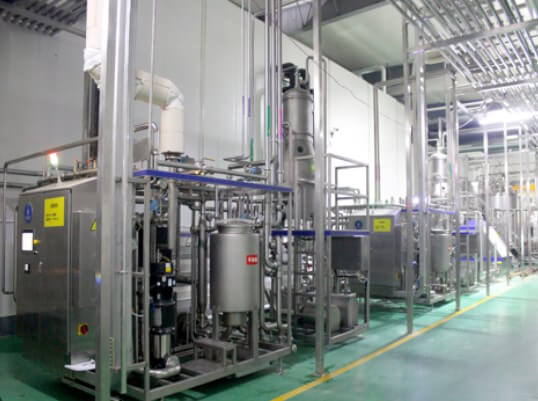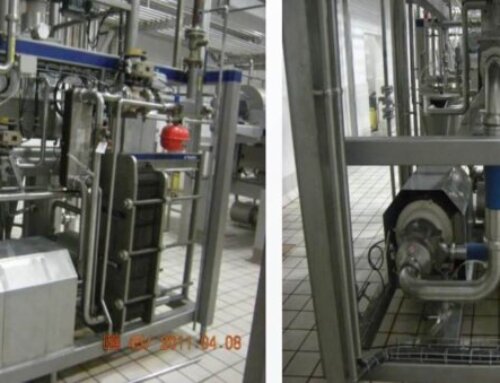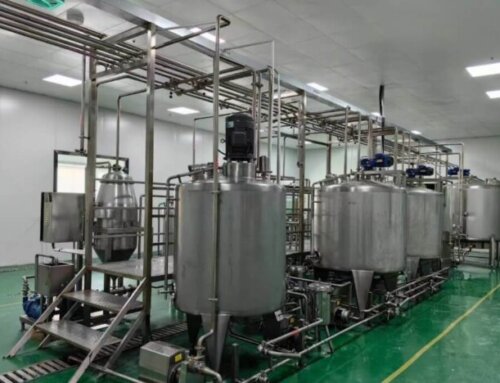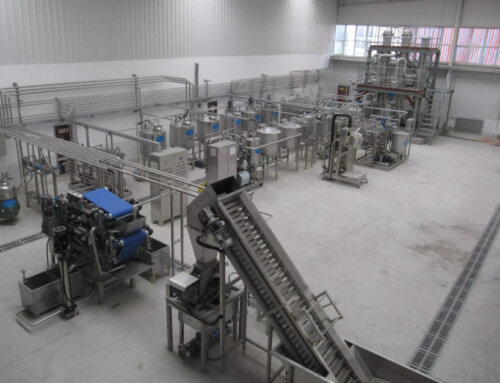Plant Beverage Production Line Description
With the development of society and the continuous progress of nutritional science research, human beings are increasingly concerned about their own health. The purpose of consumers drinking beverages is no longer limited to quenching thirst. The promotion of physical health, the improvement of quality of life and the release of physical and mental stress have become people’s new expectations for beverage products. Natural, green, healthy and environmentally friendly plant beverages have become the new favorites in the beverage industry. Plant beverages are the third generation of beverages after carbonated beverages and fruit and vegetable juice beverages, and are the trends in the development of the beverage market.
Plant beverages refer to liquid beverages that are processed or fermented using plants or plant extracts (plant extracts or plant concentrates, powders) as raw materials, with or without other food raw materials or food additives, and processed or fermented.
The general process for plant beverage production line is raw material washing and sorting, refining and extraction, beverage formulation, homogenizing and sterilizing, filling and packing machine.
The plant beverage’s most popular package will be the consumable bottles and metal cans, and the capacity of the plant beverage is from 500L/H-5000L/H.
The whole beverage processing line has the features of high production efficiency, high flexibility, saving energy, hygienic condition, compact structure and saving space.

Classification Of Plant Beverages
Cocoa drink
Cocoa beans and cocoa powder are used as raw materials, other auxiliary materials and food additives are added, and the beverage is prepared through blending, homogenization, and sterilization.
Cereal beverages
Use cereals as raw materials, add auxiliary materials and food additives, blend, homogenize, and sterilize beverages.
Herbal drink
The edible parts of plants, including roots, stems, leaves, flowers, fruits, and seeds, are used as raw materials, and flavor substances and ingredients are added to make beverages, such as herbal tea and flower beverages.
Edible fungus beverage
The beverage is prepared by using the edible fungus or the extract of the edible fungus fruiting body as the raw material, or the fermented liquid of the edible fungus as the raw material, after preparation, and sterilization.
Algae drink
Use algae as raw material, add auxiliary materials and food additives, blend, homogenize, and sterilize the beverage.

Plant Beverage Production Line Main Process Introduction
Raw materials selecting
There are many varieties of plant raw materials, and the edible parts vary greatly. The raw materials used are of good quality, taste and color, and require freshness, no mildew, no peculiar smell, and no impurities. If you want to make a composite beverage, fruits and vegetables can also be added. The added fruits and vegetables make the nutrition of the beverage more complete, and at the same time, it can also cover up the unpleasant smell and flavor of some raw materials.
Plant beverage refining and extraction machine
Refining and extraction are very important steps in the processing of plant beverages. For raw materials that require refining (grain beverages), the amount of water added during refining is 75%-80% of the total water content of the blended beverage, and two stage grinding is used when refining for pulp (coarse grinding and fine grinding), the particle diameter after coarse grinding is greater than 80 mesh, and after fine grinding, the particle diameter is greater than 120 mesh.
For the raw materials (herbal drinks)that need to be leached, it is necessary to add several times the amount of water to the raw materials, heat them at an appropriate temperature, and then soak them at room temperature to extract nutrients. The soaking time depends on the material type, state and heating temperature.
Some plant beverages need to be concentrated when they are made. The main methods of concentration are atmospheric concentration and vacuum concentration. Atmospheric concentration is concentrated by heating and concentrating in a jacketed pot at room temperature. This method has low equipment investment, but the evaporation speed is slow, and the color of the beverage, aromatic substances and heat-sensitive nutrients are lost more; During vacuum concentration, the juice passes through the vacuum equipment to quickly evaporate the water in it. It is the most popular equipment for evaporation when for industrial juice production.

Plant beverage blending and formulation tank
The sugar-acid ratio directly affects the taste of the beverage. The appropriate sugar-acid ratio is 13:1-15:1. Generally, white sugar is used as a sweetener, citric acid is used as a sour agent, and which is also has a certain preservative effect. As an antioxidant, vitamin C is not only a nutrient needed by the human body, but also has an antioxidant function. In addition, adding different flavors and pigments can not only make different beverages, but also improve the appearance of the product.
The thickener can make the drink sticky, increase the viscosity, and reduce the precipitation speed of the particles, thereby stabilizing the dispersed particles in the emulsion and improving the stability of the drink.

Plant beverage clarification and homogenization
Due to the need for clarified and transparent juice, some plant beverages require clarification during the production process to remove suspended solids in the juice. Usually need to use a centrifuge separator to clarify. For the small-scale production lines, the plate and frame filter can also be used to filter the solids and beverages.
Homogenization treatment is a necessary process to make the product finally achieve a delicate taste and stable dispersion. The prepared beverage is homogenized at a temperature of 60-70°C and pressure of 15-30Mpa. The various nutrients are even, and the stability of the product is further improved.

Plant beverage sterilizing and filling
According to the composition characteristics of plant beverages, different sterilization processes can be used, generally high-temperature short-term sterilization or ultra-high temperature instantaneous sterilization process is adopted. The homogenized material is sealed and filled, and sterilized at 121°C and pressure 2kPa for 15-20min. Heat-sensitive and nutrient-containing plant beverages can be filled into containers(bottles or cans) after sterilization at 130-140°C and 3-4S.





